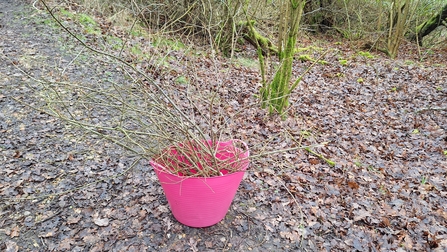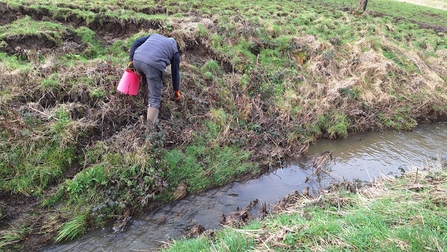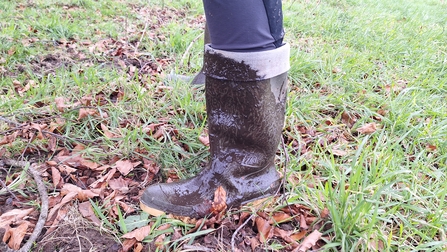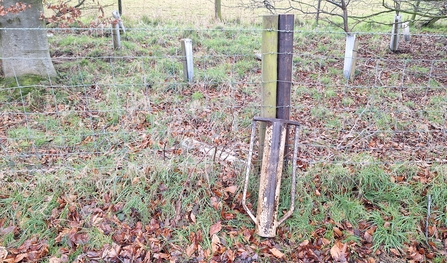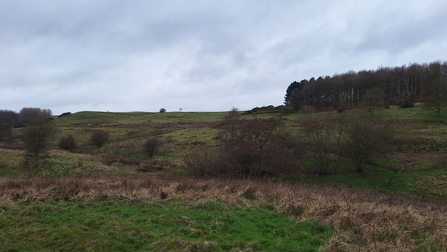If you’re a keen reader of the blog you may have noticed there was no entry for January. I did in fact visit Snipe Dales last month but it was not for my usual ‘day in the life of’. In case you didn’t know, we have recently launched a ‘Wilder Lincolnshire’ podcast available on all of the usual platforms, or alternatively you can listen here: https://podcasters.spotify.com/pod/show/lincs-wildlife-trust. For our latest episode we discussed the reintroduction of beavers in Lincolnshire as part of the Wild Wrendale project, and then looked at the similar work the Trust is doing without beavers to ‘slow the flow’ and make our brooks babble. This meant heading down to Sow Dale and getting nice and muddy as we recorded an interview with James on site. It was great to come back to somewhere I had been on my first ever month here all the way back in July and realise just how much I had learnt in that time.
The first thing I noticed after getting out the car for my latest trip was the sheer volume of noise coming from the Country Park. The birds are definitely getting louder, teasing spring's return. I don’t think I’m going to be getting my day in the snow before I finish in June! I was greeted by volunteer Andy at James’ office, who explained that James was showing some men from the county council to a bridge that they were there to fix, which had been damaged from the recent floods. Whilst we waited, we had been asked to collect shoots of willow from the reserve, that we would be planting near the stream at Sow Dale. Willow is remarkably resilient so even when parts of snapped off it will grow from the ground when replanted. As you can see pictured below James provided me with a nice bright, pink bucket to carry out the task with.


